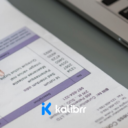6 Ways to Have the Most Effective Meetings Ever

Actually, there are no secrets. An effective meeting is the result of organization and a zero tolerance for dilly dallying. Meetings are one of the biggest time waters in many companies and that’s because the composition of your meetings is usually a mix of stress levels and priorities so they tend to veer off track at one point or another. For those of you who have been to your fair share of meetings that seem to drag on forever, this could be helpful. PS: You might also want to send these tips out as an office memo.
TOPICS
1. Choose carefully the participants of your meeting

Before you go sending a company wide invite for your next alignment meeting, think about what your attendees can contribute or gain from the meeting. Attendance can make or break the effectiveness. If you have deadbeats at the meeting, you won’t get anything done. If the manager/executive isn’t there, then no big decisions can be made. Select your attendees carefully (it won’t take much time) and make sure that everyone will be there.
2. Send relevant material ahead of time

Mark Zuckerberg does this and it is golden. Apart from your meeting having an objective, it saves up on think time to send your attendees relevant material, data, and reports beforehand. This way they can study up and the meeting time can be used for discussions. If you want to take it a step further, ask your attendees for their individual feedback on the material before the meeting and you can save even more time for pressing matters if they come up.
3. Have an end goal

You can use this as a means to drive the meeting or you can let your attendees know that this discussion or that decision has to be made by the end of the meeting. By doing this, you significantly decrease the chances of getting sidetracked and you can implement a parking lot for when unrelated ideas come up.Setting a specific goal, as opposed to just a ‘having a meeting’, gives the meeting a clear purpose, and will direct the discussion towards achieving that goal. If you have one takeaway from this article, let it be this.
4. Stick to your agenda
Something has to happen in order for you to get from point A (objective) to B (end goals). Set an agendafor even the simplest of meetings and you eliminate the risk of time wasting distractions during the discussions. It doesn’t have to be a detailed agenda, sometimes a simple list of topics and priority points is enough. In relation to sending material ahead of time, you can send this beforehand, too, and ask for feedback or points for inclusion that you might have missed.
5. Start on time, finish on time
And here’s the clincher. Let go of the concept of #FilipinoTime. Whether or not you call for the meeting, start changing the culture around the office and arrive on time so that you can finish on time as well. Your employees/boss have things to do after the meeting (and you probably do too) so it really is a win-win practice. This is also a great way for you to practice punctuality (which is a great habit to have, in the first place).
6. If you’re at the meeting, be at the meeting

This one is as literal as it gets. When the people at your meeting are busy checking Facebook or cramming a report, its going to take twice as long to finish your meeting. Implement a no (unnecessary) technology rule at the meeting so that your attendees are all ears (and minds). This will direct the focus to the objective at hand and allow everyone to contribute, both out of respect for the person who called the meeting and for the purpose of actually getting something done in that meeting. It might be time to send that office memo.



No comment available yet!